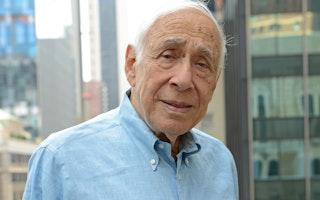The Case against Stop-and-Frisk
By Vincent Warren

The Center for Constitutional Rights (CCR) won its legal challenge to the New York City Police Department’s stop-and-frisk policy more than three years ago. But suddenly the phones in our offices are ringing off the hook again. Reporters from the New York Times to Mic.com to All In with Chris Hayes are asking us to explain why stop-and-frisk as a national policy solution would be a terrible idea.
The answer: It would be a terrible idea for the same reasons it was a terrible idea all along, reasons that led CCR to sue the NYPD to end it. Stop-and-frisk, a police practice of temporarily detaining or searching a person, violates the U.S. Constitution if police stop people based on their race or without a “reasonable suspicion” that they’ve committed a crime.
In New York City, the police did both, in violation of the Fourth and Fourteenth Amendments. The scope of the NYPD’s stop-and-frisk program—hundreds of thousands of people were stopped every year—put entire communities under siege. It created tensions between the police and the neighborhoods they patrol. And yes, it was ineffective in its stated goal of reducing crime.
At the height of stop-and-frisk, in 2011, there were 685,000 stops, 106,669 major felonies, and 515 murders in New York City. By 2015, stops fell 97 percent to 23,000. At the same time, major felonies came down to 105,453. And murders dropped to 356.
None of this surprised us at CCR. After years of litigation, mountains of evidence, and a nine-week trial, we knew better than anyone that stop-and-frisk had always been about racial profiling and not crime prevention. In 2012, the year before the trial, only five percent of stops resulted in a summons, six percent in an arrest, and a minuscule 0.15 percent in the confiscation of guns.
But it took a massive advocacy campaign and a major federal trial to get that message across to the majority of people across the nation, who for the last 20 years have believed that crime rates have increased annually, even though the evidence demonstrates the exact opposite.
The hard work paid off. “We were wrong,” the New York Daily News announced in a headline this summer. “Ending stop-and-frisk did not end stopping crime.” Marking the third anniversary of the landmark ruling that declared the NYPD program unconstitutional and racially discriminatory, the tabloid declared itself to be “delighted” to have been proven wrong. That same week, the New York Times called for an end to “broken windows,” the policing theory that gave rise to the NYPD’s stop-and-frisk practices. “Three years of falling crime has proved the critics of stop-and-frisk right.”
From Ferguson to Charlotte, and with too many black lives–turned-hashtags in between, police bias and police violence are on display as never before. With each killing we watch on camera, and each officer who goes unindicted or unconvicted, our recognition of the systemic nature of racism deepens.
In what universe could spreading this failed policy further across the country help this situation? In a country where being anywhere near a police officer is always a potentially deadly situation for a black person, how could increasing baseless police stops of innocent people of color end in anything other than more police violence?
As my colleague Darius Charney, the lead attorney in our stop-and-frisk case, put it, “For anybody who wants to address violence in poor, black communities, the most effective way is to tackle poverty, increase economic opportunity, and improve education—not to engage in unconstitutional practices.”
The lessons of New York City’s use of stop-and-frisk seem clear—and should be heeded by any community considering its adoption. At a moment of great tension across the country between police departments and the people they are sworn to protect and serve, we need positive police reforms that can genuinely address the underlying causes of those tensions, not false solutions that exacerbate them.
Since the days of Michael Brown’s shooting in 2014, CCR has used its expertise in discriminatory policing to support the emerging Black Lives Matter movement and to help build the legal infrastructure to continue to challenge police bias, misconduct, and violence. Ending stop-and-frisk was just one step in the ongoing struggle to combat structural racism. Our organization was forged in that struggle, during the days of the civil rights movement, and the work continues for us every day.
The Center for Constitutional Rights is a grantee of the Open Society Foundations.
Vincent Warren is executive director of the Center for Constitutional Rights.

